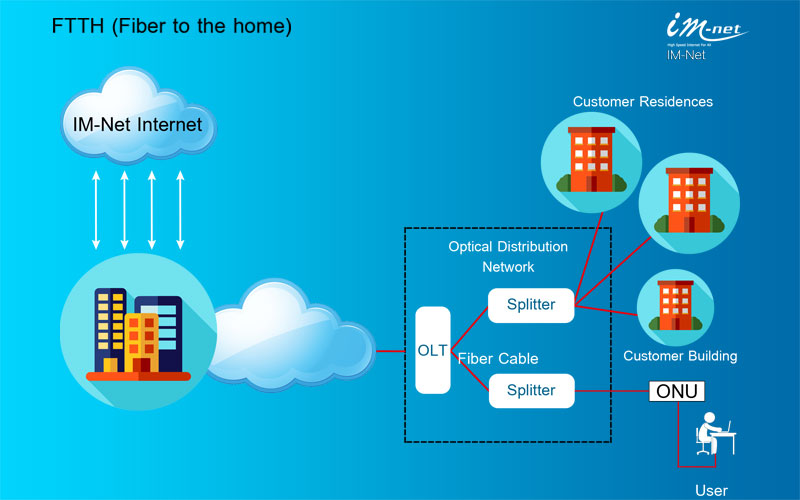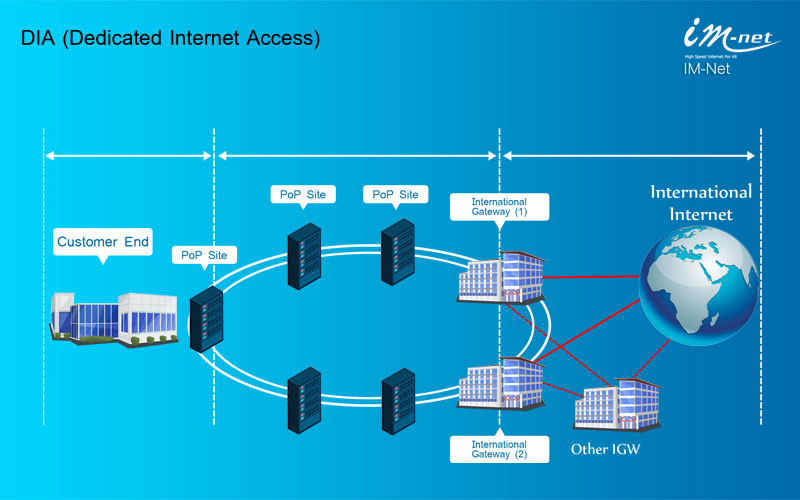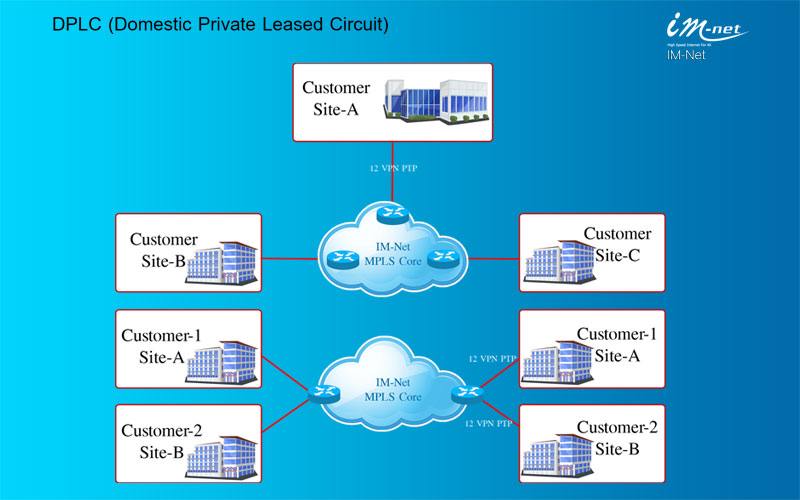
FTTH (Fiber to the home)
Fiber to the home (FTTH), also called "fiber to the premises" (FTTP), is the installation and use of optical fiber from a central point directly to individual buildings such as residences, apartment buildings and businesses to provide unprecedented high-speed Internet access. FTTH dramatically increases the connection speeds available to computer users compared with technologies now used in most places. While FTTH promises connection speeds of up to 100 megabits per second (Mbps) -- 20 to 100 times as fast as a typical cable modem or DSL (Digital Subscriber Line) connection.
DIA (Dedicated Internet Access)
DIA or Dedicated Internet Access is a continuous, high-bandwidth connectivity method for enterprises to connect their local area networks (or LANs) with the public Internet and streamline the performance of their wide area network (WAN). For starters, it is truly built for business and backed up by enforceable Service Level Agreements. Having the added capacity of fiber also allows you to receive a symmetrical bandwidth option. In other words, where a Broadband connection may deliver 50Mb/5Mb bandwidth, a DIA circuit will deliver the same speed on the upload and download. Thus, unlike with Broadband services, when you order 50Mb via DIA, you are getting 50Mb on the upload and the download.


DPLC (Domestic Private Leased Circuit)
DPLC (Domestic Private Leased Circuit) service is fully dedicated, secured point-to-point connection. This service is designed for private connection and offers customizable bandwidths ranging from 256 Kbps to 100 Mbps. It acts as a dedicated private tunnel from one point to the other where data can continuously flow for a fixed monthly fee or rent, hence the name. Leased lines are used to connect branches to company eadquarter privately. They are typically run on fiber optic cables to provide large bandwidth and speed. Leased line or managed WAN services reduce the complexity for IT departments to maintain connectivity between multiple sites. A domestic leased line will connect one or multiple sites situated in Myanmar.
Transit
Internet transit is the service of allowing network traffic to cross or "transit" a computer network, usually used to connect a smaller Internet service provider (ISP) to the larger Internet. Technically, it consists of two bundled services: (1)The advertisement of customer routes to other ISPs, thereby soliciting inbound traffic toward the customer from them (2)The advertisement of other ISPs' routes (usually but not necessarily in the form of a default route or a full set of routes to all of the destinations on the Internet) to the ISP's customer, thereby soliciting outbound traffic from the customer towards these networks.

